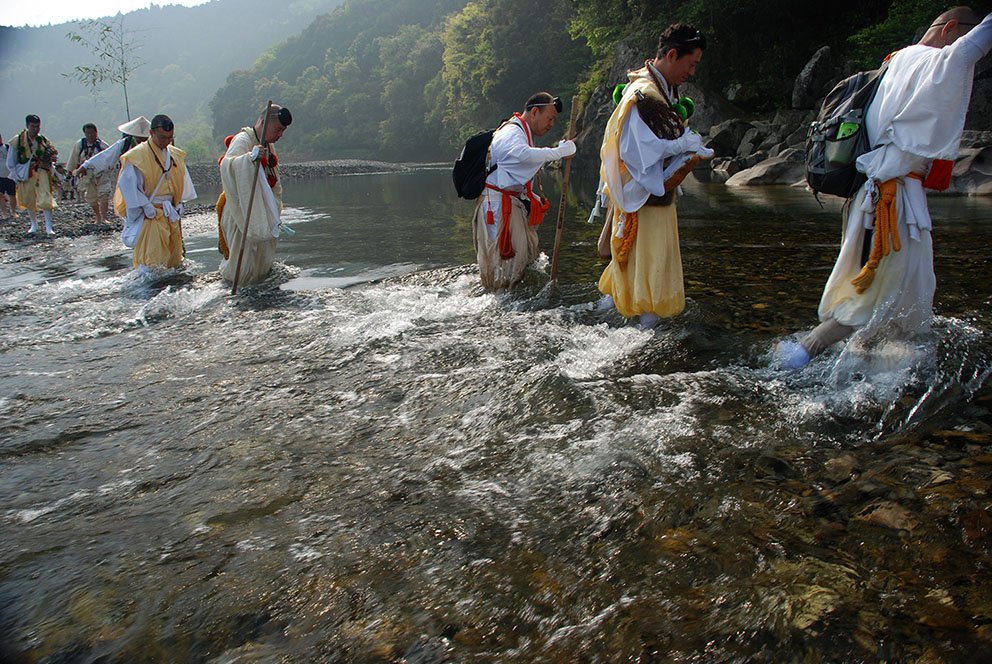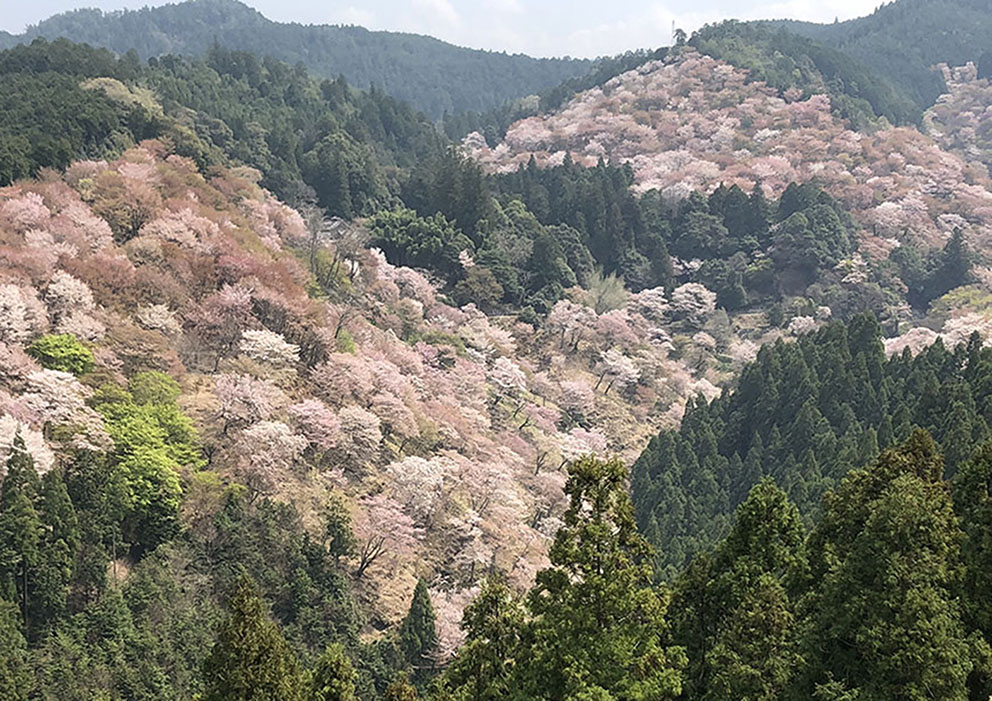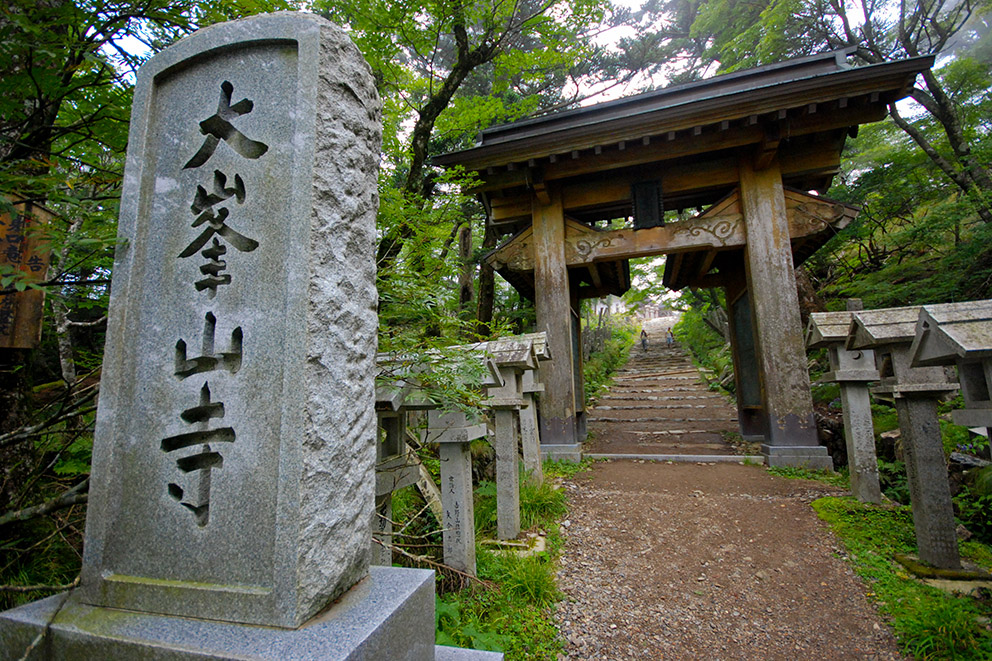Shugendo Sacred Site
Yoshino is a remote, yet historically significant, town located in Nara Prefecture about 80 km east of Wakayama City, and about an hour-and-a-half southeast by express train from Tennoji Station in Osaka.
Yoshino’s natural beauty has been well-known for centuries, often considered one of the best places in Japan to view cherry blossoms as it is said 30,000 trees of over 200 varieties bloom on the mountainsides.
A visit to Yoshino’s center for Shugendo mountain ascetic worship, Kimpusen-ji Temple, is essential, and its main hall is considered the second-largest wooden structure in Japan. Climb Mt. Yoshino, considered to be the starting point for the Omine Okugake-michi pilgrimage trail for Shugendo monks, and take in the breathtaking landscape. Mt. Yoshino features a ropeway popular with those wishing to view the cherry blossoms from above.
Yoshino marks the traditional start of the monks’ training grounds along the Omine Okugake-michi through the mountains, established in the 7th century. The Omine Okugake-michi connects Yoshino to the Kumano area.
Yoshino Historical Background
Yoshino has been the site of mountain worship since prehistoric times and was considered a divine otherworld enriched with eternal powers.
In Kumano and Yoshino, during the 9th and 10th centuries, a complex religion based on this local belief of sacred peaks took form in an organized religious tradition called Shugendo.
Shugendo is a syncretic faith combining folk religion, northern shamanism, Taoism, Esoteric Buddhism and Shinto.
The legendary founder of Shugendo is the mystical figure En-no-gyoja, and those who practice it are called Yamabushi. The main goal of Yamabushi is to gain supernatural powers through ascetic practices (self-discipline, physical exertion, and abstention from indulgence) in the mountains.
Yamabushi are active, even today, and often seen in Yoshino for their training in summertime.
Yoshino was included as part of the UNESCO World Heritage listing, “Sacred Sites and Pilgrimage Routes in the Kii Mountain Range” in 2004 along with Koyasan and the Kumano Sanzan.

Shugendo pilgrims 
Yoshino cherry blossoms 
Omine Okugake-michi route
